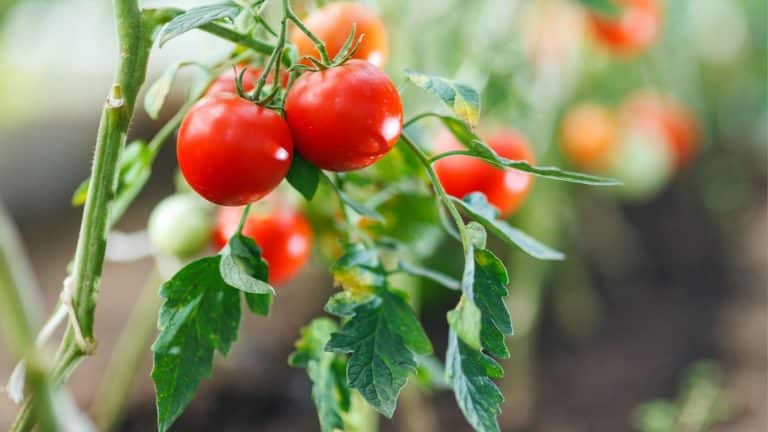Why did I switch to growing tomatoes from seed? I used to get frustrated with the limited tomato options at local stores, and the high prices for seedlings didn’t help.
So I gave seed starting a try, and it completely changed how I garden. And the best part? You get dozens of plants for just a few bucks.
I know it can feel a bit uncomfortable at first. What if the seeds don’t sprout? What if the seedlings die? Don’t worry; I’ve been there.
That’s why I’m sharing the exact steps I follow to get strong, healthy plants from seed to harvest. If I can do it, you can too.
Why Start Tomatoes from Seed?
Starting tomatoes from seed saves you real money. A single packet costs about the same as one store-bought seedling, but gives you dozens of seeds to grow now and in future seasons.
You’ll also get a much wider variety. Grocery stores might sell three or four types. Seed catalogs offer hundreds. Want deep purple tomatoes? Tiny cherries? Unique heirlooms? Growing from seed makes it possible.
Plants raised from seed tend to be stronger, too. They develop healthier root systems under your care, and you control their environment right from the beginning.
You also get to choose your timeline. Start seeds when it suits your schedule, not when stores decide to stock seedlings.
What You’ll Need Before Planting
Here’s a clear and well-organized breakdown of the basic supplies you’ll need to grow tomatoes from seed, along with their estimated cost ranges:
| Material / Supply | Estimated Cost Range (USD) |
|---|---|
| Tomato seeds (any type) | $3–$13 |
| Multi-purpose compost | $2–$15 |
| Seed trays or pots (with drainage) | $7–$30 |
| Propagator lid or plastic wrap | $2–$10 |
| Watering bottle | $2–$10 |
| Spoon or knife | $0.50–$3 |
| Support stakes or cages | $2–$20 |
| Crushed eggshells | $0–$5 |
| Plant labels | $1–$10 |
| Total Estimated Cost | $19.50–$116 |
NOTE: Prices are estimates and may vary by location or brand. Reusing household items can lower your total cost.
Steps on How to Grow Tomatoes from Seeds
Growing tomatoes from seeds takes a bit of patience, but you’ll end up with strong, healthy plants ready to thrive in your garden. Here’s how to do it from start to finish:
Step 1: Start Seeds in Warm Soil
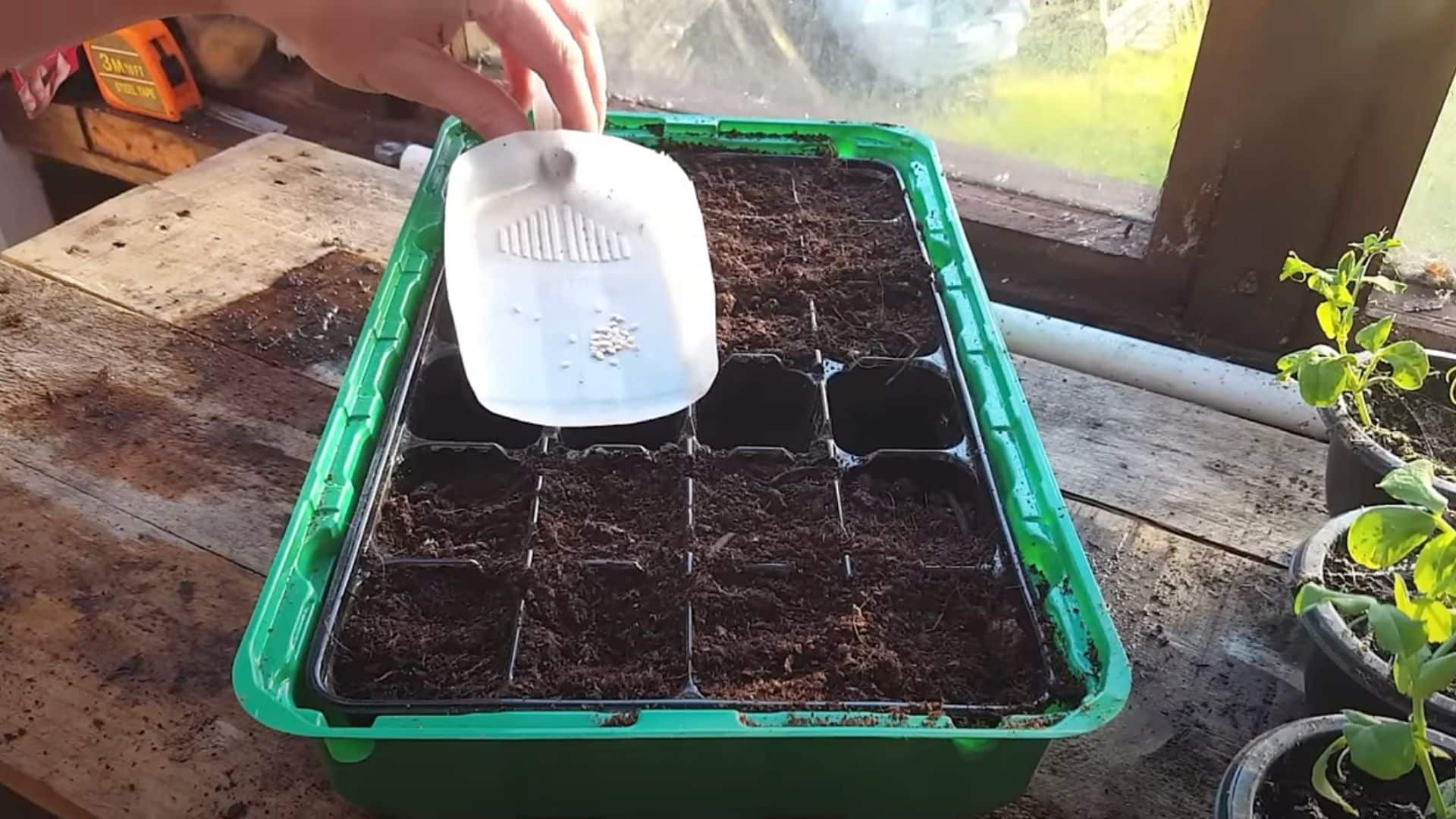
Fill seed trays with moist compost and poke a half-inch hole into each cell with your finger. Drop one seed into each hole, cover it gently, and gently pat the surface down.
Be sure to label each tray so you can easily identify which variety is which. Cover the tray with a plastic lid and place it somewhere warm, such as a heating mat or a sunny windowsill.
Helpful Tips:
- Start seeds 6–8 weeks before your last expected frost
- Press the soil gently so seeds stay tucked in
- Always label trays clearly to avoid mix-ups
Step 2: Water and Wait for Sprouts
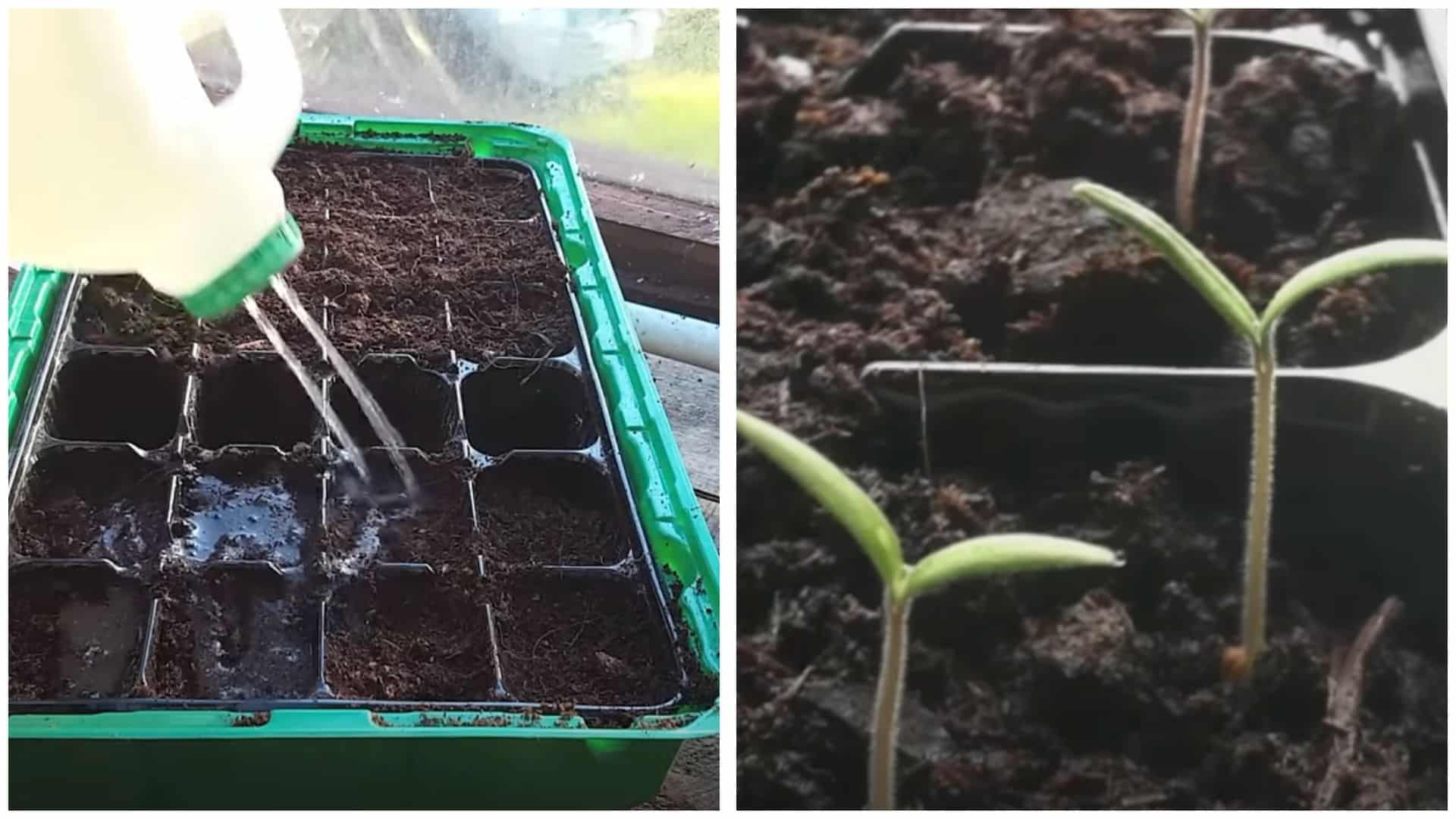
Keep the soil moist by misting or gently watering when it starts to dry out. Don’t soak it. Cover the tray and put it in a sunny, warm spot.
Sprouts should show up in about 5 to 7 days. Crack the lid slightly to let in some air while holding in warmth; this helps keep mold away and gives seedlings the best shot at growing strong.
Helpful Tips:
- Use a soft spray bottle for watering
- Leave the lid slightly open for airflow
- Expect sprouts in about a week
Step 3: Transplant Gently When Bigger
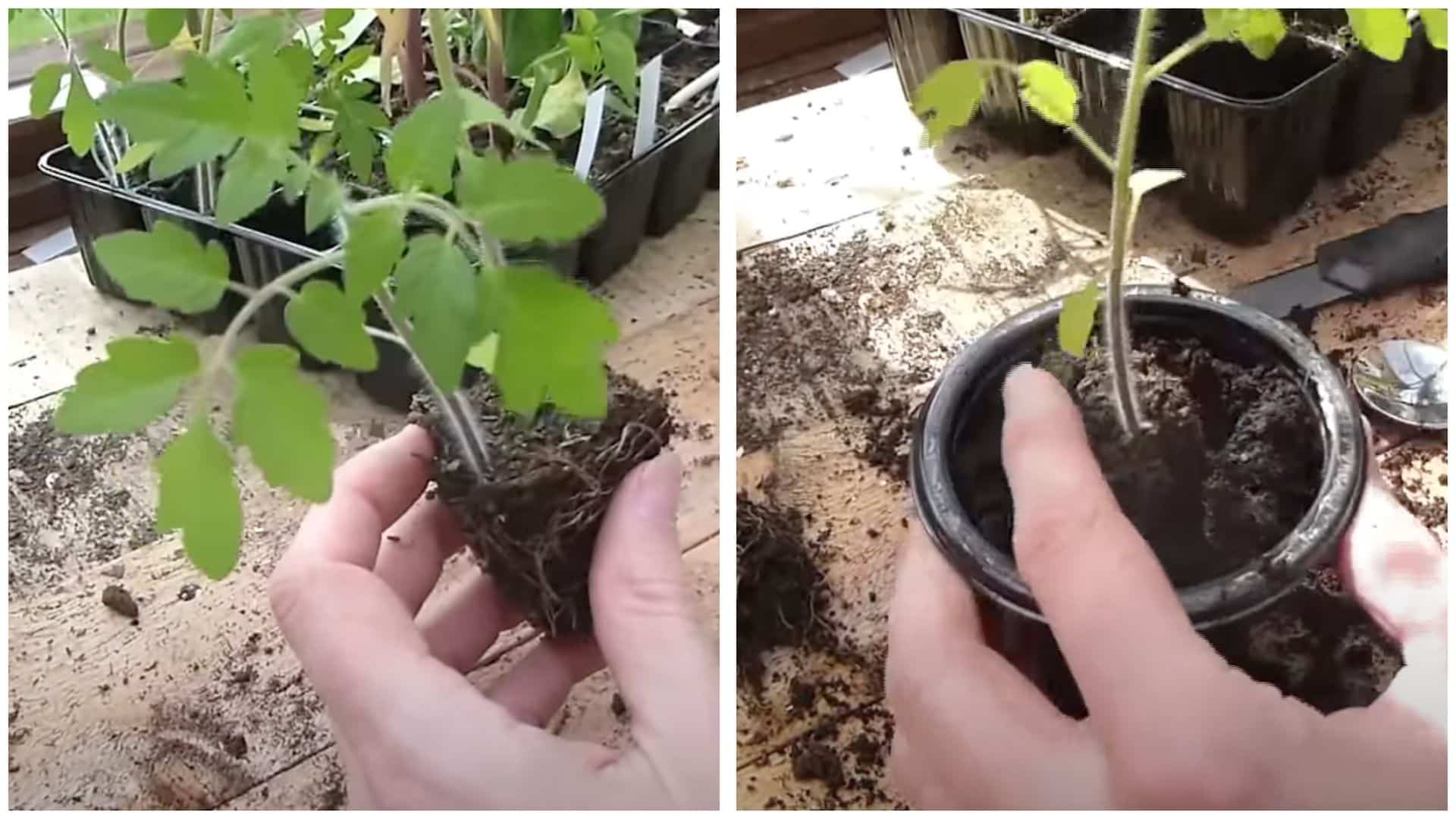
Once your seedlings have two sets of true leaves, it’s time to give them more space. Gently lift each one by the leaves (never the stem) using a spoon or small tool.
Move them to slightly larger pots and plant them a little deeper than they were before.
Tomato seedlings grow extra roots along buried stems, so deeper is better.
Helpful Tips:
- Always hold the leaves to avoid damage
- Bury deeper to help roots grow stronger
- Use fine compost or potting mix when transplanting
Step 4: Harden Off Before Planting Outside
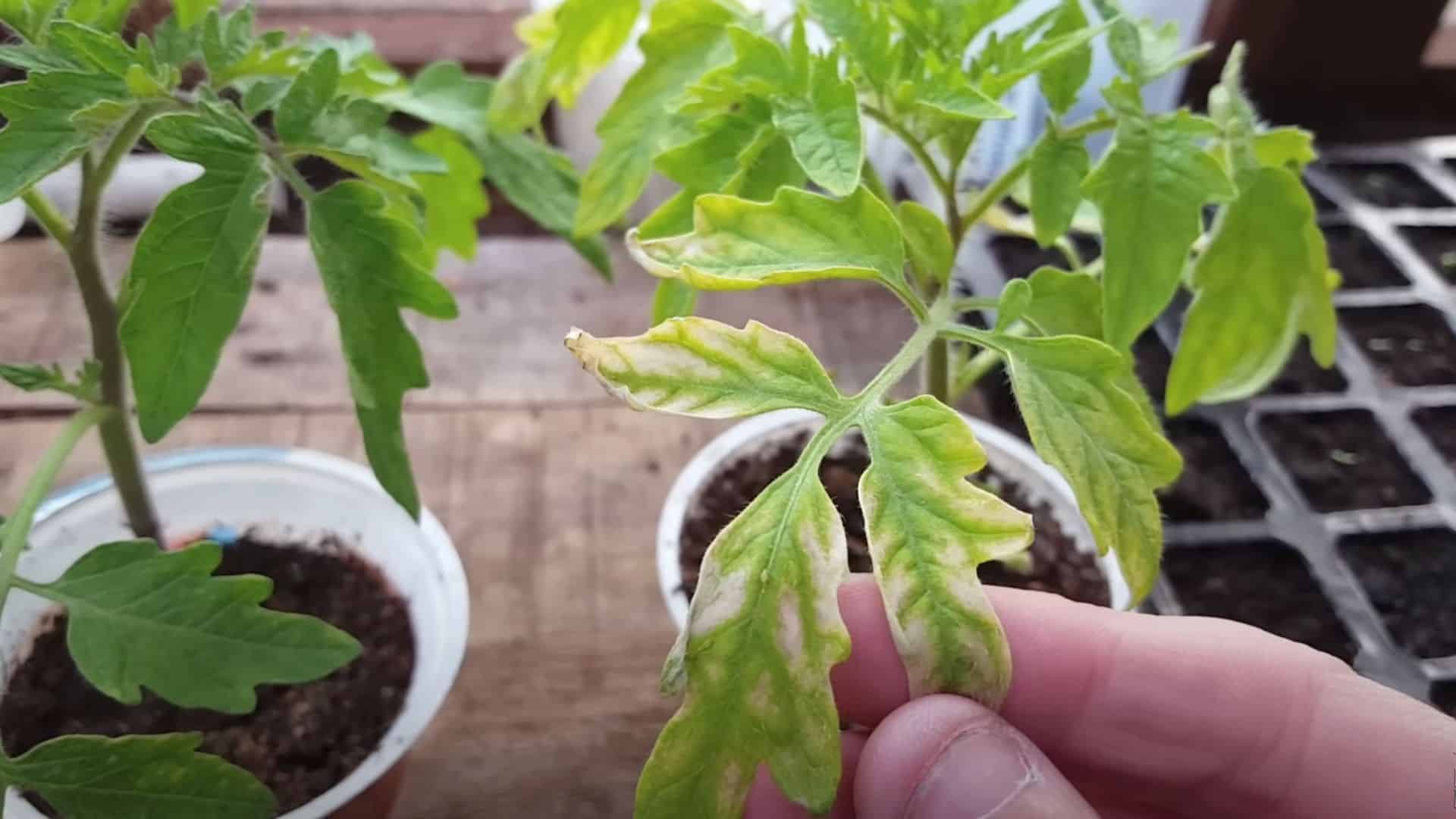
Help your seedlings get used to the outdoors slowly. Start by putting them outside for just one hour, then add another hour each day for a week.
Begin in a shaded, wind-protected spot to prevent shock. This gradual adjustment prepares them for real garden life without causing undue stress.
Helpful Tips:
- Start with just an hour in mild weather
- Increase outdoor time slowly each day
- Keep seedlings shaded and away from the wind at first
Step 5: Plant in Final Spot and Support
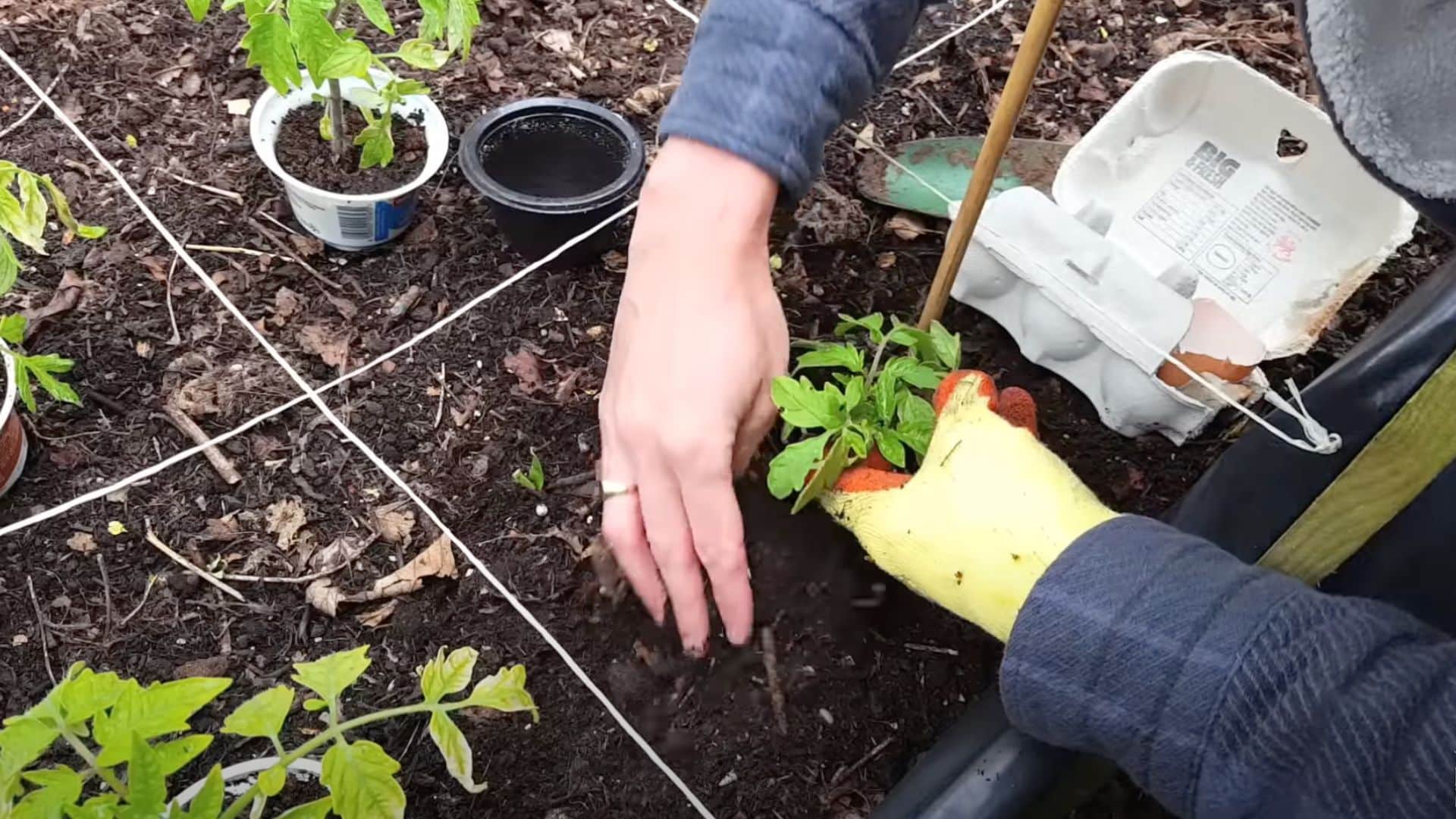
After about a month, your plants are ready to move to their permanent home, either garden beds or large containers.
Add crushed eggshells or a calcium boost to each hole. Plant deep, up to the lowest set of leaves, and gently press the soil around the base.
Water deeply and place a cage or stake right away to keep them upright as they grow.
Helpful Tips:
- Add eggshells to support healthy growth
- Give a deep drink of water after planting
- Stake early so you don’t damage roots later
Watch How it is Done: Growing Tomatoes from Seeds Video Tutorial
Tomato Seed Starting Timeline
Growing tomatoes from seed follows a predictable timeline that takes you from tiny seeds to ripe fruit. Each stage has its own needs and milestones to watch for.
| Stage | Description |
|---|---|
| Germination | Seeds sprout and first leaves appear within 5–10 days |
| Seedling Stage | True leaves develop and plants strengthen over 2–3 weeks |
| Potting Up | Move to larger containers for more root space around week 3–4 |
| Hardening Off | Gradually introduce plants to outdoor conditions during weeks 6–8 |
| Transplanting | Plant in final garden location or large containers at week 8–10 |
| Vegetative Growth | Plants grow tall, develop branches, and flower buds from week 10–14 |
| Fruiting & Harvest | Flowers turn to fruit, tomatoes ripen for picking starting week 16–20+ |
Understanding this timeline helps you plan your seed starting date based on your local frost dates. Most gardeners need about 16-20 weeks from seed to first harvest.
Harvesting and Storage Tips
Picking your tomatoes at the right time helps keep them flavorful and extends their shelf life. A few simple tips make a big difference:
- Tomatoes start turning from green to their final color at the bottom first, then work upward
- Ripe tomatoes yield slightly to pressure but still feel firm, not mushy or rock hard
- Hold the stem above the tomato and twist gently until it snaps off cleanly without damaging the plant
- Place unripe tomatoes in a paper bag with a banana to speed ripening in three to five days
You’ve put in the work from seed to plant; this is where it all pays off with flavor you can’t beat.
Wrapping It Up
Growing tomatoes from seed is one of the most rewarding things you can do in the garden. You save money, grow stronger plants, and get access to varieties you won’t find in stores.
It all comes down to a few smart steps, warm soil, gentle care, good transplanting, and easing plants into the outdoors.
My garden is packed with unique tomatoes that all started from seeds no bigger than a fingernail. Every harvest reminds me why starting from seed is more effective than buying plants. That first juicy bite makes it all worth it.
Thinking of starting your tomato seeds? Drop your questions or favorite varieties in the comments below!


